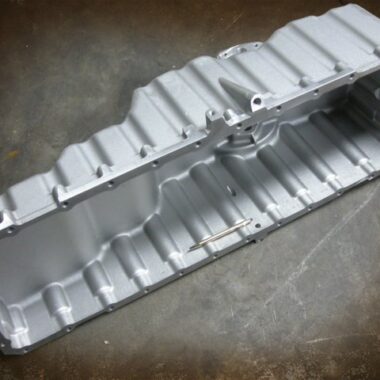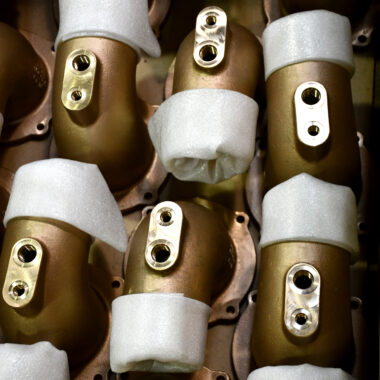Making The Most Of Efficiency: Advanced Aluminum Casting Solutions Unveiled
Making The Most Of Efficiency: Advanced Aluminum Casting Solutions Unveiled
Blog Article
Dive Into the Globe of Aluminum Spreading: Comprehending the Various Techniques
Aluminum spreading is a basic procedure in the manufacturing market, with numerous approaches used to develop precise and detailed components. From the traditional sand spreading technique to the innovative die casting procedure, each method offers one-of-a-kind advantages depending on the requirements of the task.
Sand Spreading Approach
Sand casting, a widely-used technique in aluminum casting procedures, includes producing mold and mildews made of compressed sand for pouring liquified metal. When the mold and mildew is ready, it is safely put in a flask and molten aluminum is poured into the dental caries.
After the steel has cooled down and strengthened, the sand mold is escaped to reveal the aluminum spreading. Sand casting permits the manufacturing of intricate forms and huge components that may be expensive or hard to produce using other methods. It is likewise a lasting technique as the sand can be recycled and utilized numerous times, minimizing waste in the casting procedure.
Long-term Mold And Mildew Technique

One considerable advantage of the Long-term Mold And Mildew Technique is the improved dimensional accuracy it offers. The steel mold and mildew permits for tighter resistances and finer details in the last aluminum spreadings compared to sand spreading approaches. This precision makes it a recommended option for applications where tight dimensional control is critical, such as in the aerospace and automotive industries.

Pass Away Casting Process

Financial Investment Casting Strategy
Making use of a precision spreading technique, Investment Casting Method involves creating complex light weight aluminum parts by putting molten metal right into a ceramic mold and mildew. This process, also known as lost-wax his explanation spreading, begins with the development of a wax pattern of the desired component. This wax pattern is after that covered with a ceramic product to develop a shell. As soon as the ceramic covering is solidified, it is heated up to eliminate the wax, leaving behind a hollow ceramic mold and mildew.
Financial investment casting is frequently used for making parts in industries where complex layouts and tight tolerances are called for, such as aerospace, automobile, and medical devices. The convenience and accuracy of the Financial investment Casting Approach make it a useful strategy in the globe of aluminum casting.
Lost Foam Casting Approach
Having actually explored the intricate precision of Investment Casting Strategy, the focus now moves to the cutting-edge approach of Lost Foam Spreading in light weight aluminum component manufacturing. Lost Foam Casting, likewise understood as evaporative pattern spreading, is a contemporary strategy try here where a foam pattern of the wanted component is developed and after that covered with a refractory product. The layered foam pattern is after that hidden in sand, and molten light weight aluminum is put right into the mold and mildew. As the steel fills up the mold, the foam evaporates because of the warm, leaving a clean cavity in the shape of the desired component.
Additionally, Lost Foam Casting is an economical process as it decreases the requirement for cores and allows for the production of light-weight components. Regardless of its benefits, Lost Foam Spreading needs mindful control of the casting process to ensure and stop defects high quality parts.
Final Thought
To conclude, aluminum spreading supplies a variety of techniques such as sand spreading, irreversible mold and mildew technique, die casting, financial investment casting, and shed foam casting. Each technique has its very own advantages and applications, making light weight aluminum casting a functional and extensively used process in various markets. Recognizing the distinctions between these techniques is vital in picking the most appropriate spreading method for specific manufacturing needs.
Sand spreading, a widely-used method in aluminum spreading procedures, includes creating mold and mildews made of compacted sand for pouring molten steel. aluminum casting.The Irreversible Mold And Mildew Technique, like sand spreading, is another prevalent method utilized in aluminum spreading procedures, providing unique advantages in terms of mold reusability and dimensional accuracy. The metal mold enables for tighter tolerances and finer details in the last light weight aluminum castings compared to sand spreading approaches. The 2 primary kinds of die casting are cold chamber die spreading and warm chamber pass away casting, each suitable read this post here for various kinds of aluminum alloys.In conclusion, aluminum spreading supplies a range of techniques such as sand casting, permanent mold strategy, pass away spreading, investment casting, and lost foam casting
Report this page